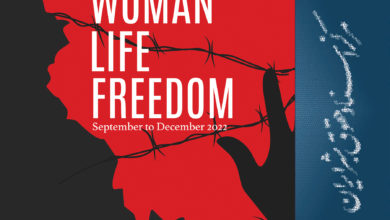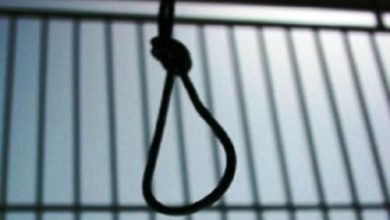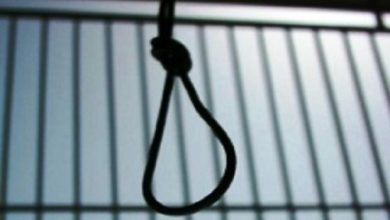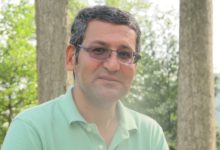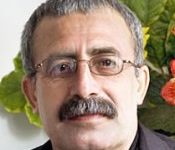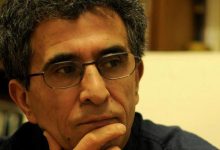Witness Statement of Maruf Kabi
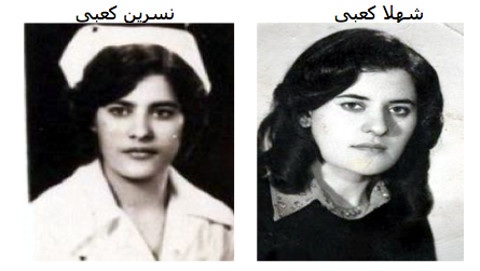 |
|---|
Name: Maruf Kabi
Place of Birth: Iran
Date of Birth: March 31, 1968
Occupation: Student
Interviewing Organization: Iran Human Rights Documentation Center (IHRDC)
Date of Interview: February 1, 2011
Interviewer: IHRDC Staff
This statement was prepared pursuant to an interview with Maruf Kabi. It was approved by Maruf Kabi on February 1, 2011. There are 19 paragraphs in the statement.
The views and opinions of the witness expressed herein do not necessarily reflect those of the Iran Human Rights Documentation Center.
1. My name is Maruf Kabi. I am 42 years old and I am an Iranian Kurd. My two sisters, who were nurses at a hospital in Saqqez, were executed during the early years of the revolution. Their names were Shahla and Nasrin.
2. My older sister Shahla had a lot of control in our house over our mother and father. Everyone said that she was the number one authority in the house. Whenever our relatives came to see us, she handled all of the housework. At the time that they were executed, I was 12-13 years old. What I remembered from that time is that Shahla was a woman with a lot of authority who was very serious, and had very modern standards for that time. She read the newspaper every day, paid attention to politics, and her clothing style was also very modern. She was very serious and everyone respected her. My other sister Nasrin and I were very close and she always watched over me. She was a witty and cheerful person who looked after everyone. I remember around the time of the revolution, whenever Shahla saw a poor person, she always wanted to do something for them and help them.
3. My sisters were well known in Saqqez hospital; out-of-towners who’d come to the hospital to be treated and had no relatives to take care of their affairs were always given a lot of help and attention by my sister. The two of them did not belong to any political group but because of the revolution, the situation at the time, and the incidents that occurred in Kurdistan, they had become somewhat political, formed their own opinions, and often spoke them out loud.
4. The war between Kurdistan and the new regime occurred very quickly after the revolution. In September of 1979, a military column attacked Saqqez and war broke out. Shahla and Nasrin worked alongside the doctors at the hospital to treat the wounded. Everyone who was injured, whether IRGC or armed Kurdish individuals, were treated the same. My brother later described an incident where an IRGC individual was injured and the Kurdish forces wanted to interrogate him but Shahla would not allow them because she said that he was wounded and needed rest. After that, Khalkhali[1] arrived in Saqqez. A book entitled “Behind the Curtain of the Revolution,” by Gholam Hussein Borourjerdi points out the flow of executions that took place in Saqqez. On television, they showed a woman wearing a chador who swore on a Quran in court that she does not belong to any factions and has done nothing wrong. This woman was Shahla. A Saqqez hospital medical group, which included my two sisters, was exiled to Qazvin and taken to a safe place.
5. In the fall of 1979, during the time of negotiations between KDPI and IRI, the IRGC left Kurdistan. Besides a military garrison stationed in the center of the city, there were no other military forces left in the city. Shahla, Nasrin, and the doctors who were exiled to Qazvin returned. From what I remembered, they returned on their own and not by the order of the regime. Some of the doctors were also exiled to Kerman. In mid-April 1980, the regime attacked Sanandaj again and the 24-day Sanandaj war occurred.
6. [After being] in Saqqez for a period of one month, the army began shooting at people and war broke out. People migrated to the city of Bukan and put up tents in Bukan’s stadium. I remember going to Bukan with my mother and my father. I once again saw Shahla and Nasrin helping the doctors in the stadium. They were a little afraid of what would happen when they returned. My mother and father were in an older age and I was the youngest member of the family. My parents returned to Saqqez in an automobile. I was the only brother present at the time because my older brothers were in the peshmarga[2] forces. So, Shahla and Nasrin and I went to Tabriz in a car. From there we went to Tehran and stayed for 1-2 nights and then returned to Sanandaj. I do not remember if we all returned together to Saqqez or if they came separately but by the month of June, we were all together in Saqqez. I imagine that if we knew something bad was going to happen or even if they had thought something bad was going to happen, we would not have returned. My sisters were not political. From a cultural and personal character perspective, they would not enter political problems. Generally, they were not attracted by ideology.
7. In May of 1980, after the end of the war in Kurdistan, at 12 midnight, there was a knock at our door. We knew that it must be the IRGC because the Kurdish people did not leave their houses at night. They had also climbed to the roof of the house. Upon entering our house, they said, “We know these two have returned.” A small wall separated our house from our neighbor’s house. My sisters climbed this wall and ran to the neighbor’s house but the IRGC guards ran after them and caught them. I recall my mother and father speaking to the IRGC forces in the yard. They took Shahla and Nasrin to a prison in Sanandaj. My mother and father also went along with them to the prison to ensure that it was possible to later visit with the two of them. I stayed home along with my other sister, Dardaneh, who was a teacher in a village and only come to visit us once a week.
8. The night of the arrest, they took Shahla and Nasrin to the Saqqez IRGC prison. After that, they first took them to Evin prison and then they returned to Sanandaj prison. No more than four months separated the arrest and the execution of my sisters. At that time, I was 12 years old. My father had a store and I helped him out in that store. I recall my father returning from Sanandaj and saying that when he went to the prison he was told that Shahla and Nasrin would be released on Friday and that he and our mother could come and collect them. Dardaneh and I stayed behind along with another relative. At some point, a relative arrived and said that my father had called and said to close the store and go to Sanandaj. I asked why but no one said anything to me. However, my feelings told me that my sisters were not released but were instead executed. I had this feeling because first it was a possibility and also because when they told me to close the store, their mannerism and appearance was such that I guessed something bad had happened. Most likely, my sisters had been executed.
9. I closed the store and went back to the house. I saw many people around the house and that the neighbors were coming and going to our house. Dardaneh was inside of the house crying and the neighborhood women were consoling her. We went to Sanandaj in a car. My father was crying. We went to my sister Shahdokht’s house, who lived in Sanandaj. Her husband had served in the army. What had profoundly hurt and upset me was that, in front of the prison, the IRGC personnel had thrown my sisters’ clothes into my mother’s face. My brother, Sadiq, who was five or six years older than me but younger than Reza, was also imprisoned at the Sanandaj prison at this time because he was a supporter of the Komala. A guard had told him about the news of my sisters’ execution and [the guard] said that he wished to shave his face [as a sign of joy and not mourning].
10. At Sanandaj prison, first they told my mother and father that my sisters were not released and were instead executed. My parents asked where their bodies were buried and were told in Tayla cemetery. At the cemetery, my mother and father thought to dig the graves so that they could ascertain which grave belonged to whom. The gravedigger insisted that they should not and instead trust him when he said that the tall girl (Shahla) was in one grave and the other one was in another grave. I am one hundred percent sure that there was no trial. In fact, so far as I know, there was no visitation either. In addition, my sisters’ charges, their crimes, were never announced.
11. On March 18, 1982, 27 families were exiled from Saqqez to Fulad Shahr of Esfahan. My family was among these 27 families. They were housed in the housing complex set up for war refugees named Ba Honar. The reason for the exile was that the men of these families were either peshmerga for KDPI or peshmerga for Komala. After 2 months, I escaped from the camp and separated myself from the family. At first, I went back to Saqqez and then later became a peshmerga. After four years, the families were permitted to return. My parents did not want to return to Saqqez so they went to Sanandaj. The revolution and what followed it turned the lives of my parents upside down. They lost their children in the process too.
Khalkhali
12. Khalkhali was an animal who had such a lasting effect on me that I cannot talk about the events of those years without mentioning him. On August 19, 1979, Khomeini issued the order for jihad against Kurdistan and the military took Saqqez. War started, and in late August, Khalkhali executed 22 people in Saqqez. Their names are available and were published in Kayhan newspaper. Most of them were our neighbors: soldiers, students and businessmen. We don’t know the real reason for their execution. When the IRGC took the city, anyone who was out of his house was arrested and some were later executed. Boroujerdi describes in his book how during the time that they were taking over the Gharji Abad area, they had a young Kurdish boy who was their interpreter. Afterward, Khalkhali said that the boy should also be executed. Boroujerdi said that he protested stating that the boy was their interpreter and there was no reason why he should be executed. However, in the end, the boy was executed.
13. When the military forces entered Saqqez, they claimed there were armed forces blocking their entry but this was not true at all. The sound of crying and moaning came from all of the houses in our neighborhood. Khalkhali put fear in the hearts of the Kurdish people. Mothers and fathers were the ones primarily affected. Mr. Mohammad Fooladi, who was executed, was the head of a family. His daughter, Mahvash lives in Australia now. Fooladi’s name is not on the list. He was involved in the city’s public administration during the time when the IRGC left the city. He left the city and stayed at an adjacent village. They told him to leave but he did not. Eventually, Fooladi was arrested after the 22 people and then executed.
Sadiq Kabi
14. Sadiq Kabi was one of my brothers. He was in prison and later released. He was very involved in political activities. During the second war in Kurdistan, all four of my brothers were with the peshmerga. We are five brothers. Mohammad is the oldest and still lives in Sanandaj. Rauf lives in Paris. Reza is in Stockholm and Sadiq was killed in combat with IRGC. After being released, Sadiq went to Sanandaj and participated in political activities. One day, one of the Kurds who was cooperating with the regime by the name of Atta, who was from Saqqez, ran into Sadiq. Atta was surprised to find Sadiq in Sanandaj and asked him to get into his car but Sadiq didn’t and got away.
15. On February 19, 1986, Sadiq was in a village called Shamseh with the peshmerga forces. Early in the morning, the IRGC forces attacked the village and conflict started. I was in a unit at the same village and we came out and surrounded the hills. The regime could not do anything so they began shooting and mortaring the area. I could hear our forces on the walkie-talkie speaking in password saying that we have injured forces we need to take care of. They said that the injured were moved to a secret location. I guessed that it was Sadiq they were speaking of. I was right; Sadiq was injured. Two of the female peshmerga, Hanifeh and Farideh, one of whom was a physician’s assistant, stayed with Sadiq. This was in the area between Divandareh and Saqqez. The two ladies remained there and and helped Sadiq. After that, another physician’s assistant by the name of Karim stayed with him. Farideh later relayed Sadiq’s will to us. Sadiq had died during this time.
Mohammad Kabi
16. My oldest brother Mohammad was imprisoned in Sanadaj, both in the SAVAK prison and in the gendarmerie, since 1976. The reason for this was that at one point during a search a suspicious book was found on him. I loved Mohammad very much and, as a child, was always wondering why he was in prison since he was so good. He was very low key and had friends from all layers of society. He was also very active socially and politically. Our city, Saqqez, is also small and everyone knows everyone. People used to say that Mohammad is always worried for the under-privileged and the poor.
17. His political ideology was developed while in prison. That was where he met and got to know Foad Mostafa Soltani. Mohammad was above partisan divisions and generally was with the people. While in SAVAK prison, at one point he went on a 24-day hunger strike. Before the revolution and as a form of an appeasement, Shah ordered the release of a few political prisoners. Mohammad was one of them. There were others too. They received a warm welcome from the people. When Mohammad came back home, there was a party at our house for three days straight. People even arrived from Marivan and other cities. Later on, Mohammad became a peshmerga and left the city. I used to go to the camp and visit him. However, his personality did not match with such partisan activities. He preferred to be among the people. After the killing of Foad Mostafa Soltani, Mohammad was very depressed and sad. Although he had the opportunity to leave and migrate to Europe, he came back to Sanandaj so as to be with my parents.
18. Generally, the regime allows those who return from the peshmerga camp to remain in the city and don’t bother them very much. Maybe they would be imprisoned for a while but they are usually released and not further bothered. However, Mohammad was bothered a lot. Until last year, whenever some strife would take place, no matter what it was about, Mohammad would be arrested subsequent to it by the IRGC. He was severely tortured too. He told me on the phone that the last time he was imprisoned he was tortured and bothered more than all his other imprisonments combined. There were cases where people who knew him told him on but in fact he was not active. Basically, whenever something happened, the IRGC looked for people they knew and then arrested them assuming they had a hand in the strife.
19. In short, Mohammad was not allowed to have a calm and normal life. Even when he divorced his wife, the court voted against him and gave his wife total custody although that is not how the decisions in Iranian courts are where men are always favored. The regime knew him as someone who is uncooperative with the regime. However, people also knew him and liked him a lot. He was always interested in discussions and exchanging views. The Kurdish people have Kurdish issues penetrating all facets of their lives. For example, people who lost a family member to conflict or execution are usually visited by other Kurds living in the area. They don’t do anything alarming, only a simple visit. However, even this little activity is not approved by the regime.
[1] Mohammed Sadegh Khalkhali was a Shi’a cleric and served as the first Chief Justice of the Islamic Revolutionary Court. Known as the “hanging judge,” he was reportedly responsible for sentencing hundreds if not thousands of people to death.
[2] Peshmerga, sometimes spelled peshmerge, is a term used by Kurds since the start of the Kurdish independence movement in the 1920s that literally means “those who face death”. The term is used quite broadly—the definition ranges in definition from Kurdish fighters to simply any civilian that is a supporter and defender of Kurdish civil and political rights.


